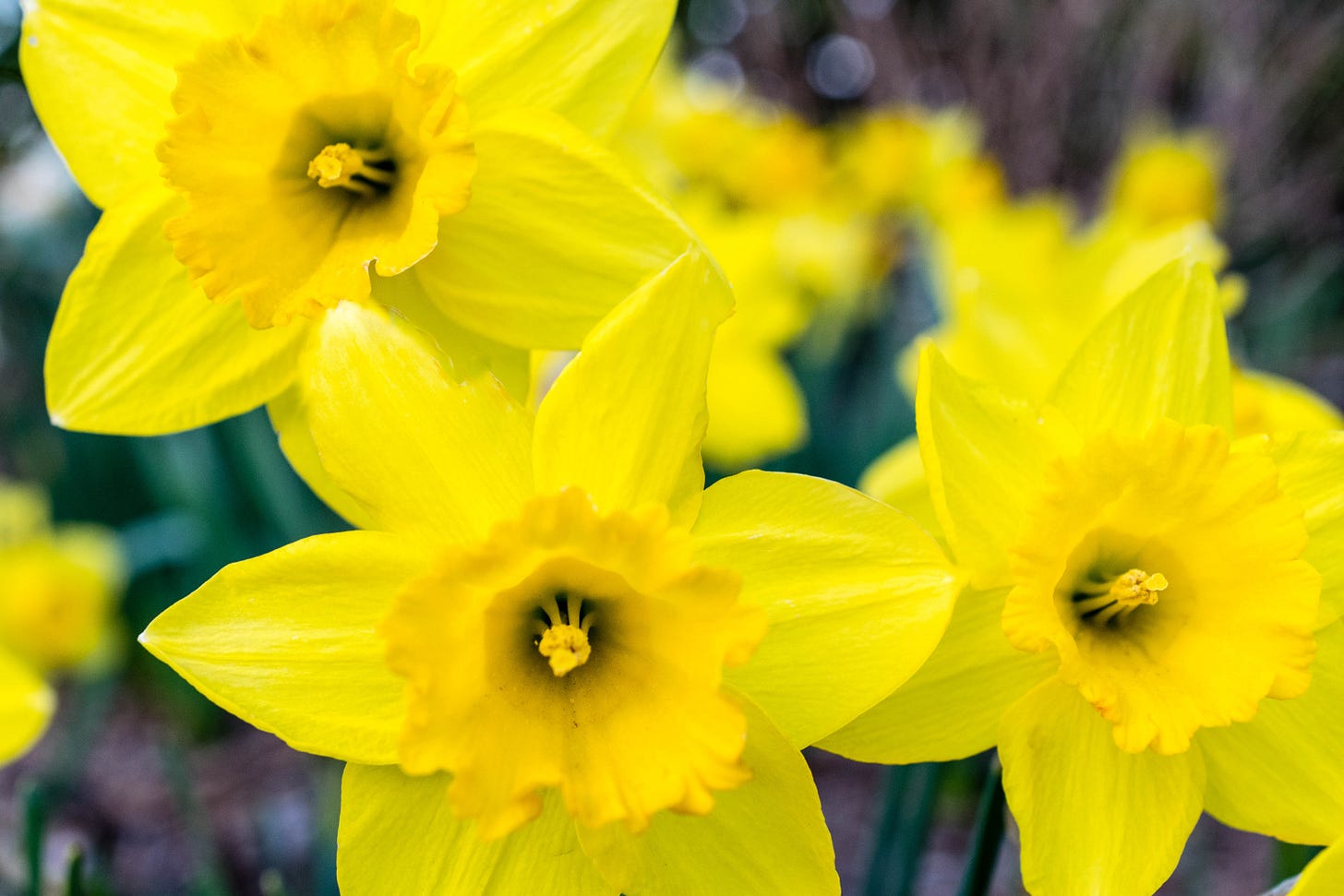Daffodil Day - Demonstrating Change Leadership
Achieving your vision is all about managing and influencing change
I have always supported Daffodil Day, and was pleasantly surprised to find that this year the Daffodil Day was a resounding success with all flowers being sold out in spite of the lock down in Melbourne, and inability of the Daffodil Day to set up fund-raising stations around the Melbourne city offices.
This made me analyse how they managed to do this with all the restrictions. I have supported the Daffodil Day quite often over the years, and I reviewed what led me to purchase items for Daffodil Day in the first place.
The Rialto1, Daffodil Day and the Cancer council have partnered for a long time for Daffodil Day. Prior to 2020, the Rialto would turn yellow by having a “sea of daffodils” in their Piazza in a show of support for everyone touched by cancer and to raise money for the cancer council.
Since 2020, and in spite of ongoing issues with Covid19, lock downs and restrictions, the partnership between Rialto and the Daffodil Day continued. This is despite a lot of office workers not returning to the city.
While a lot is said about creating a vision and strategy, not enough is mentioned about the change required in achieving the vision. How do you break up the change required into steps that can be achieved? What are the risks in the transformation? How do you plan for issues that are not in your radar?
The vast majority of my purchases for Daffodil Day were in my office building. I would notice the bright yellow flowers, the Cancer Council Victoria logo and normally a large crowd of interested people in the items being sold.

The main reason I buy an item is that I do strongly believe in advancing research on cancer and finding tests that allow an early detection of cancer, particular for women’s cancers where early tests are not available yet, like ovarian. Other reasons are:
the items were sold at a place I normally went to (my office building). This provides easy accessibility and takes the logistics away from the purchasing decisions by being where the customer already is
I was able to purchase a brooch instead of flowers, and I was happy to pay more for it than for a flower. This fulfilled my requirement for long-term purchase
I was educated on the issues of cancer prior to Daffodil Day. I knew about the need for continuous research into cancer and support for cancer patients
I added the brooch to my jacket to show my values and what I stand for. This was a brand I was happy to be associated with. Whenever someone would ask about the brooch, I was able to advertise the Daffodil day to them, and was a not only an advocate, but a cheerleader.
The normal customer journey starts with a trigger point that makes the customer think about purchasing a product. The truth however is that I was already well on the way of supporting the Cancer Council; I just needed to purchase a gift that was value for money.
Here is my take on customer persona and customer journey maps :
During Covid, the Rialto and the Daffodil Day achieved the same level of product accessibility for customers by sending them the flowers via Uber. It is important to know why a customer buys a product by understanding what their key problems are in purchasing a product.
The main take-aways from analysing customer’s journey are:
reduce the number of decisions the customer needs to make in order to purchase. An example is making the product available where the customer is. If they are at home because of the lock down, then it should be easy for them to order the product to be delivered to their home
understanding what you do well, and where a partner might help (using Uber)
understanding the value of the company you are buying from. I understood the value they are bringing to the society and world at large by their work. This is their reputation
brand awareness. This is the familiarity we have with the brand logo and the problem(s) the product and or company is trying to solve.
In periods of massive change, such as the ones we have seen for last 1.5 years, it is important to remember what problems the customer could experience in making a purchase, and to reduce the issues and complexity as much as possible.
Remembering that both the Rialto and the customer have a common goal of helping the Cancer Council and people suffering from cancer. This is change leadership. Understanding the end goal for both yourself and the customer, and making the steps towards the goal as easy as possible.
About Me:
I have more than 20 years of experience in the telecommunications and IT fields. I have both a Bachelor a Computer Science and an Accounting degree. I have provided both technical analysis as well as business analysis for product developments and life cycle improvements.
I can be contacted to provide any blogs, marketing material, technical writing or training requirements. Please reach out to me on bhamini.runa@divergentone.com if you would like any of my services.The Rialto is one of the attractions of the Melbourne city. Prior to the Eureka building being built, the Rialto was the highest building in Melboure, with an observation deck. It is also a large office building.






Well done Runa. Interesting article about how people should value businesses before making their purchases.